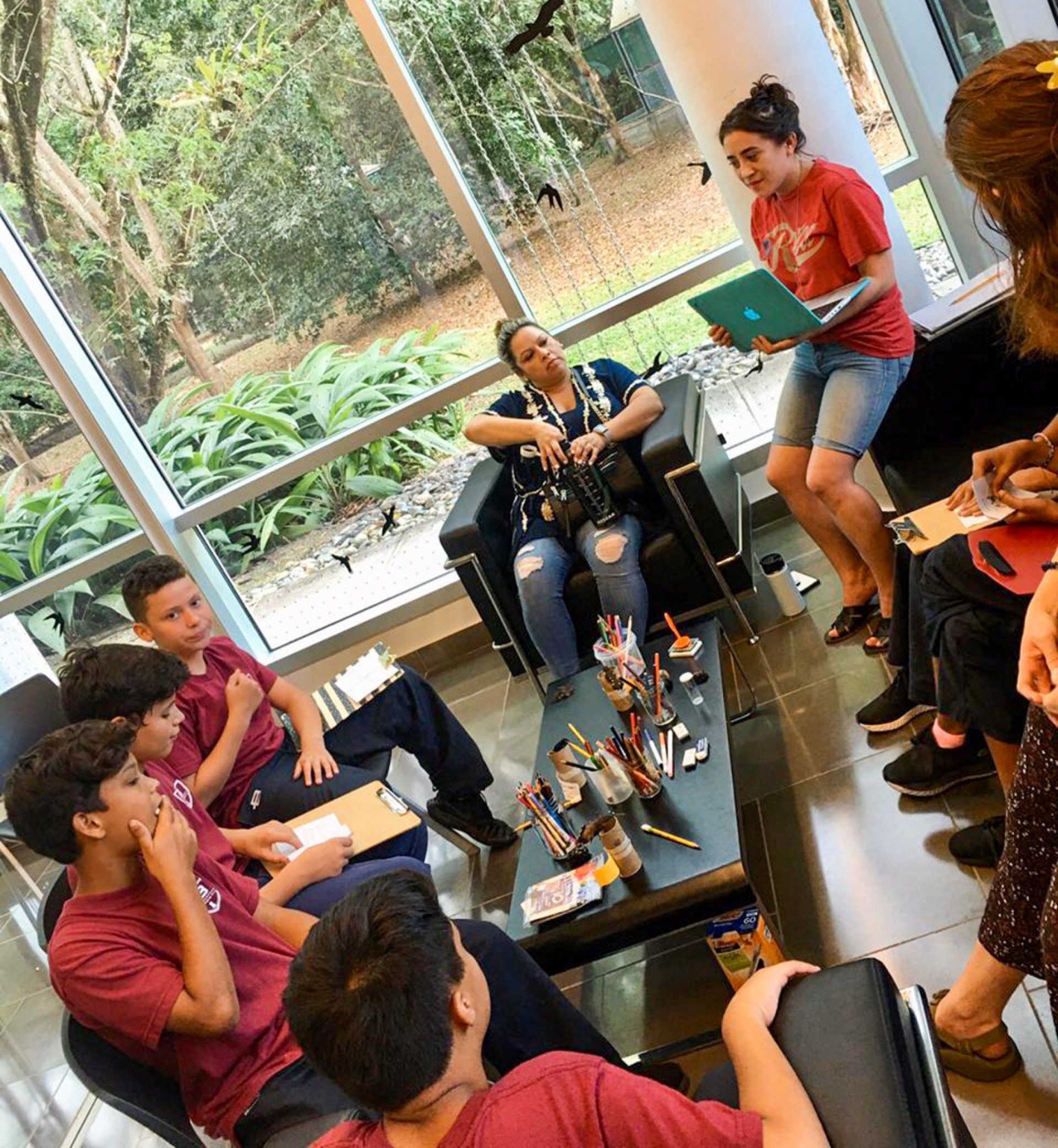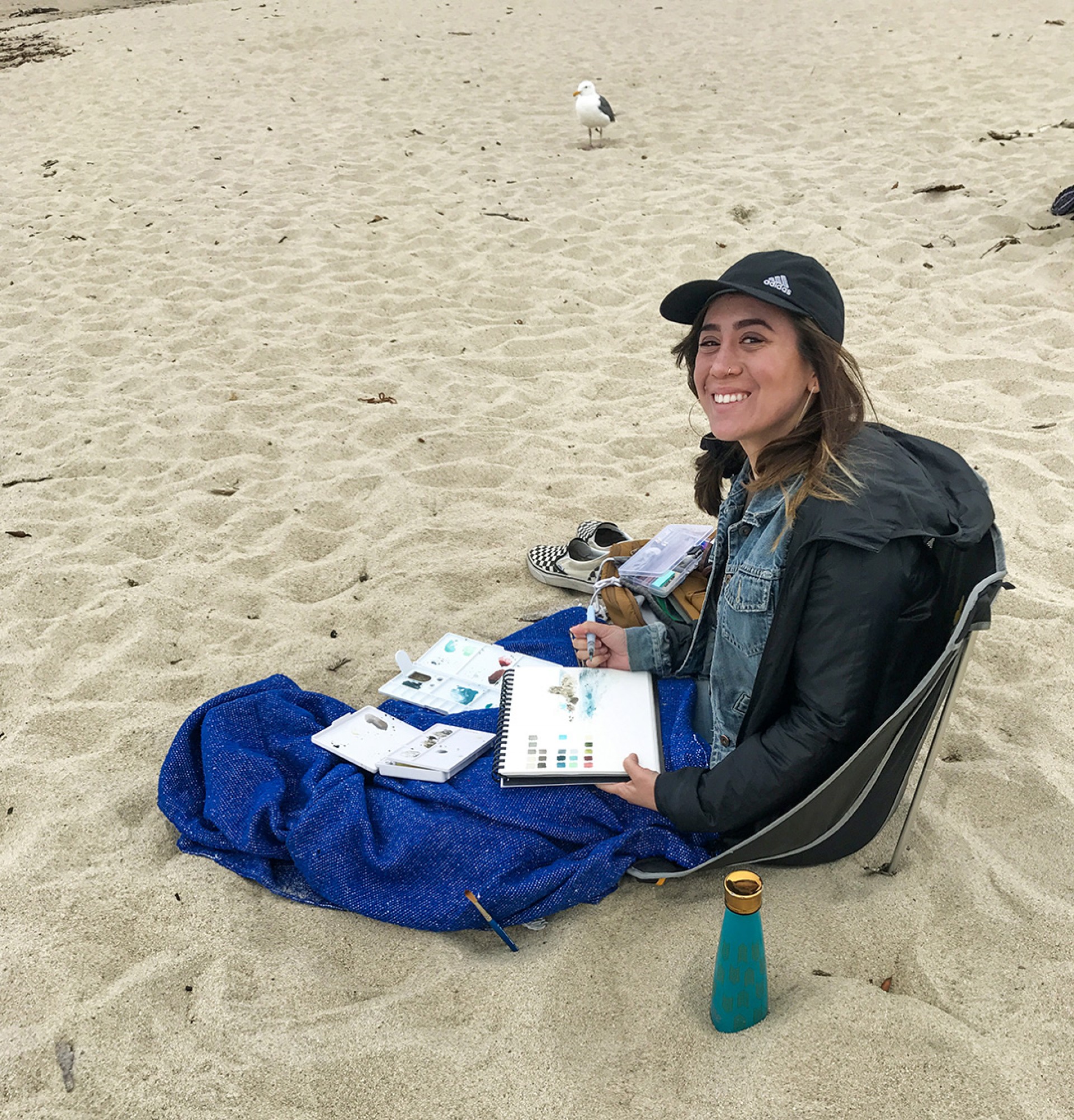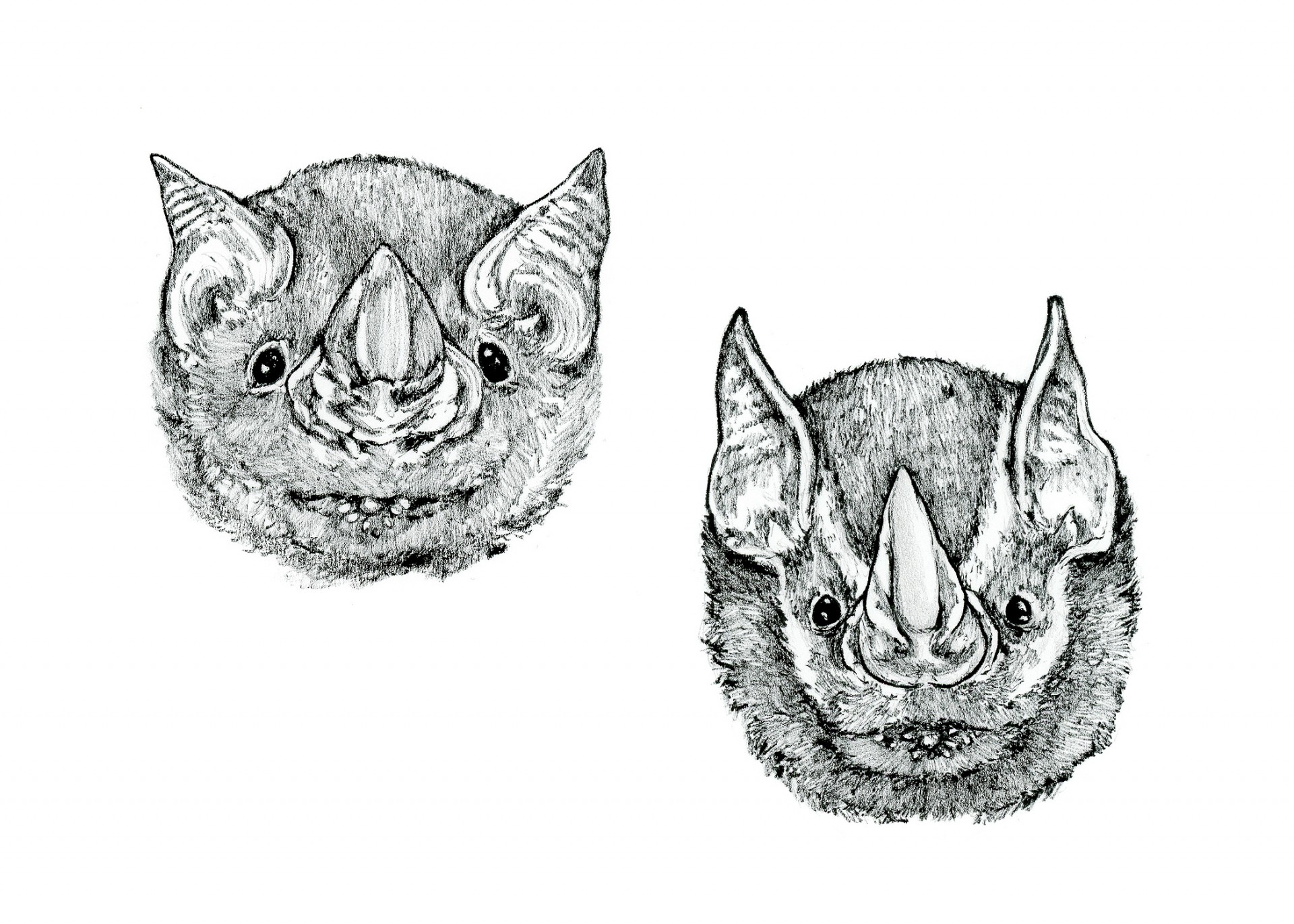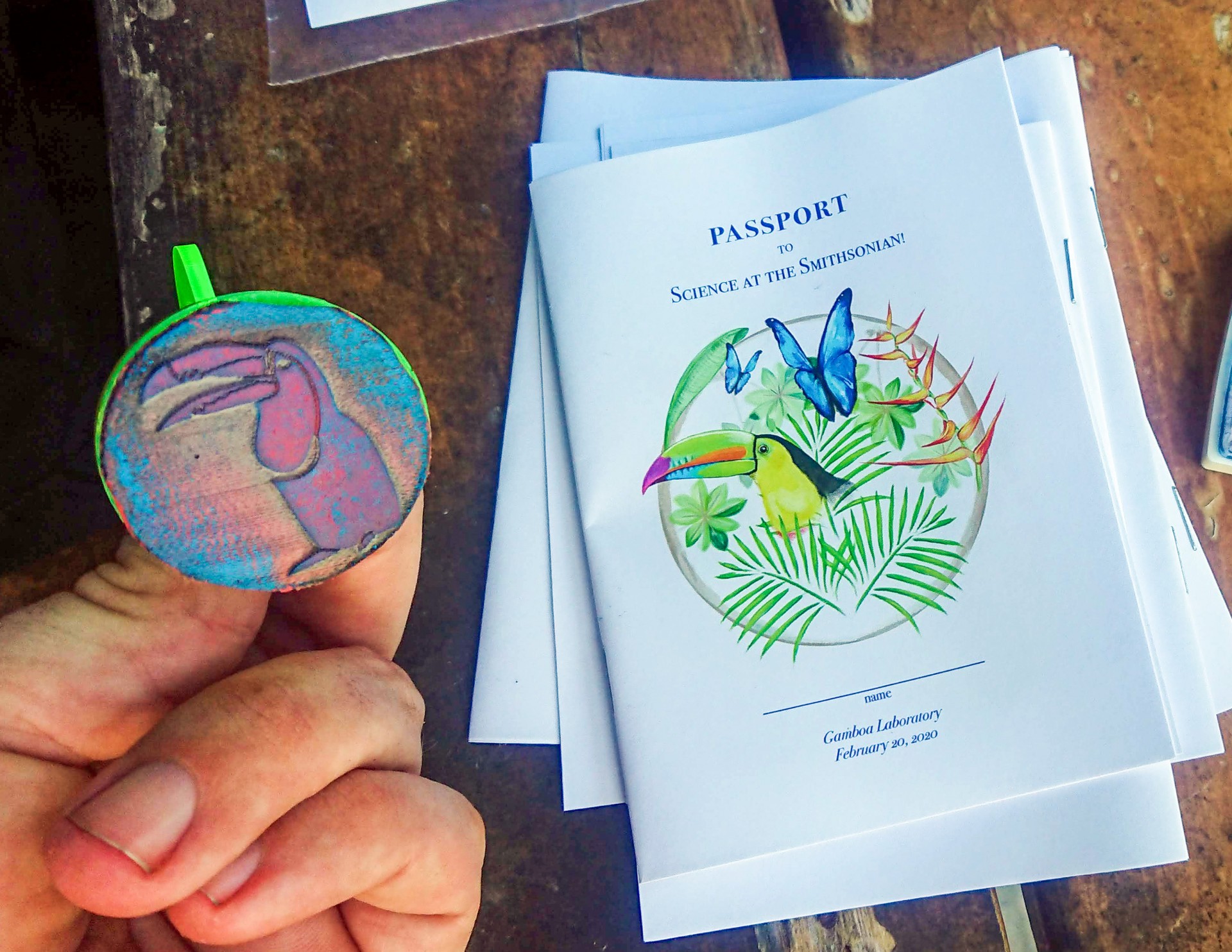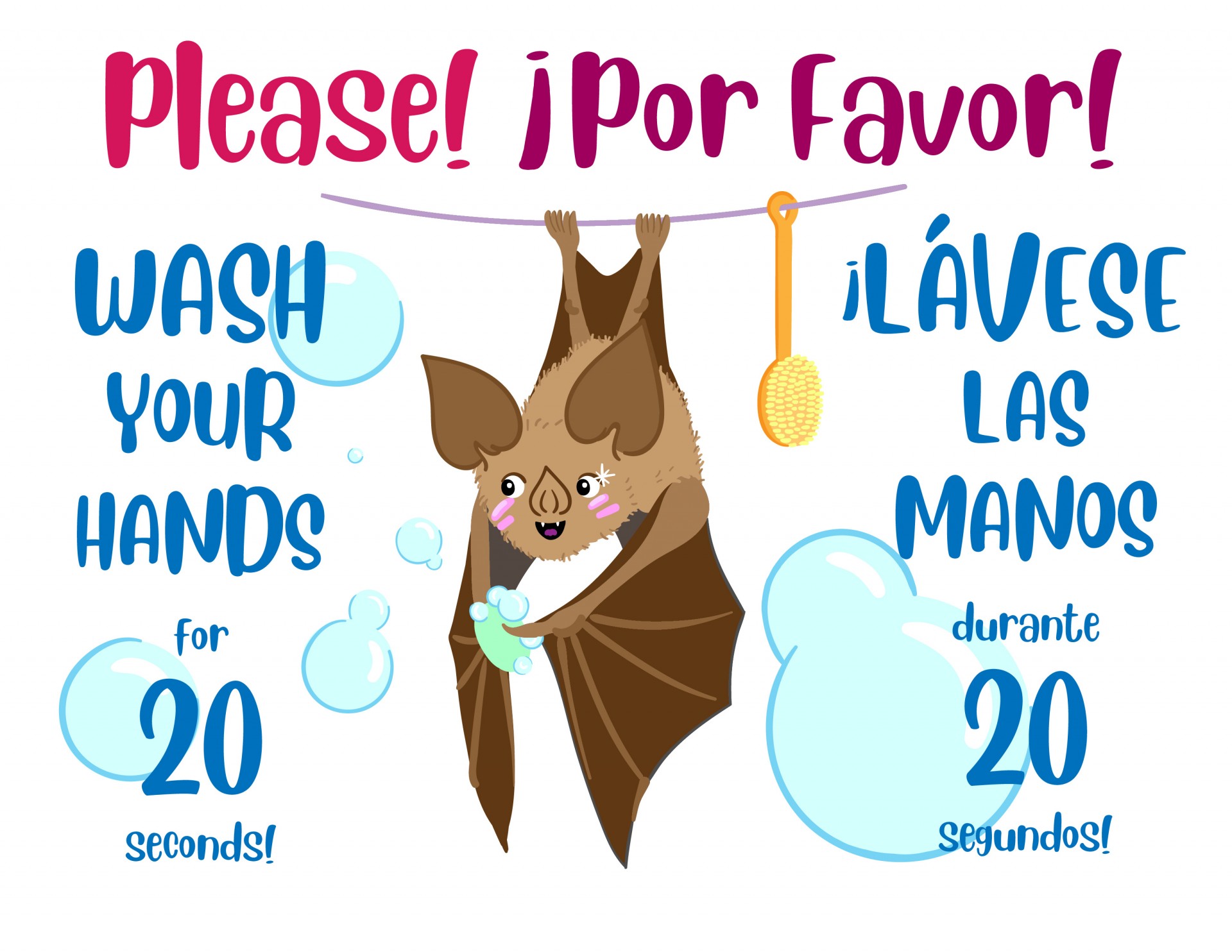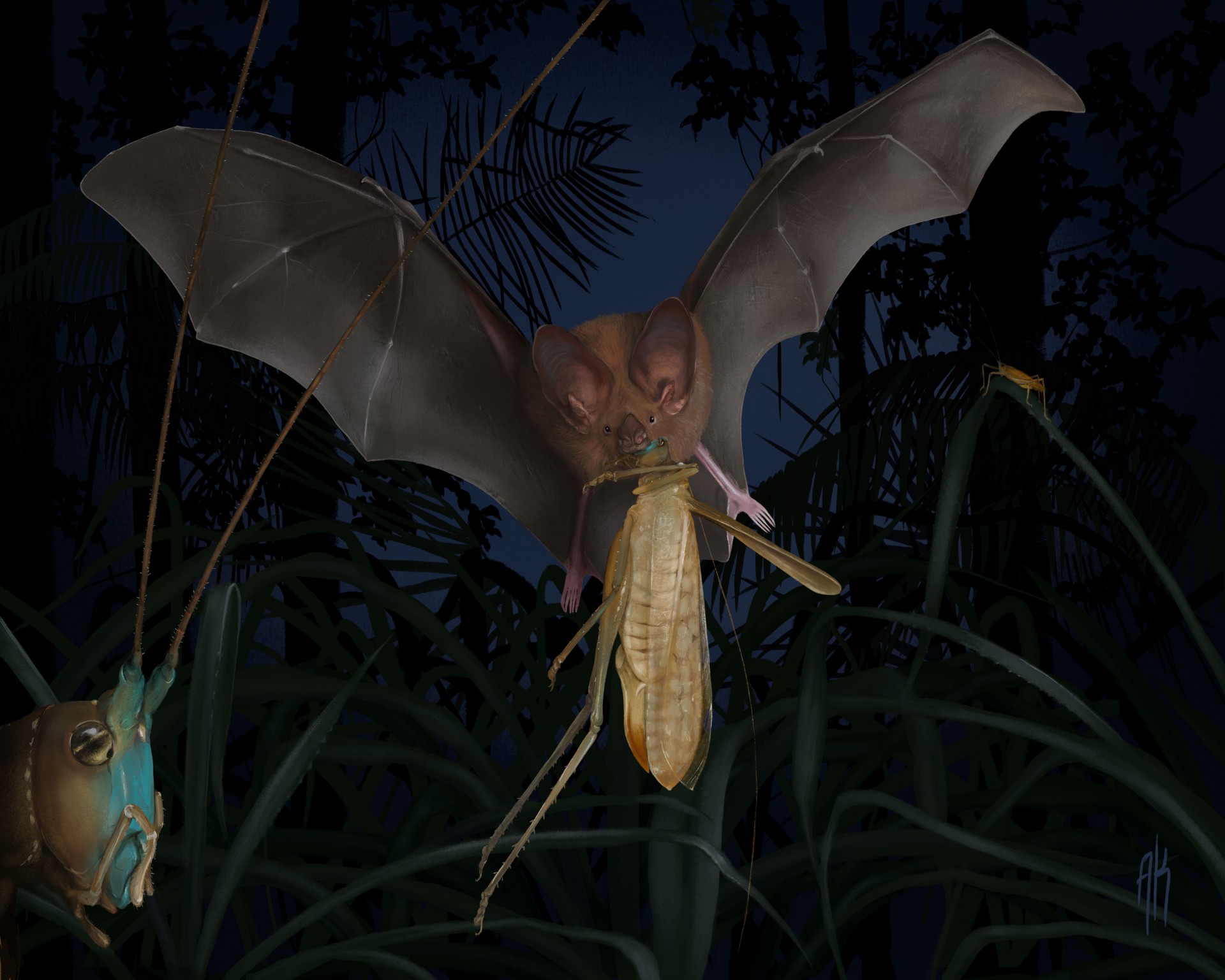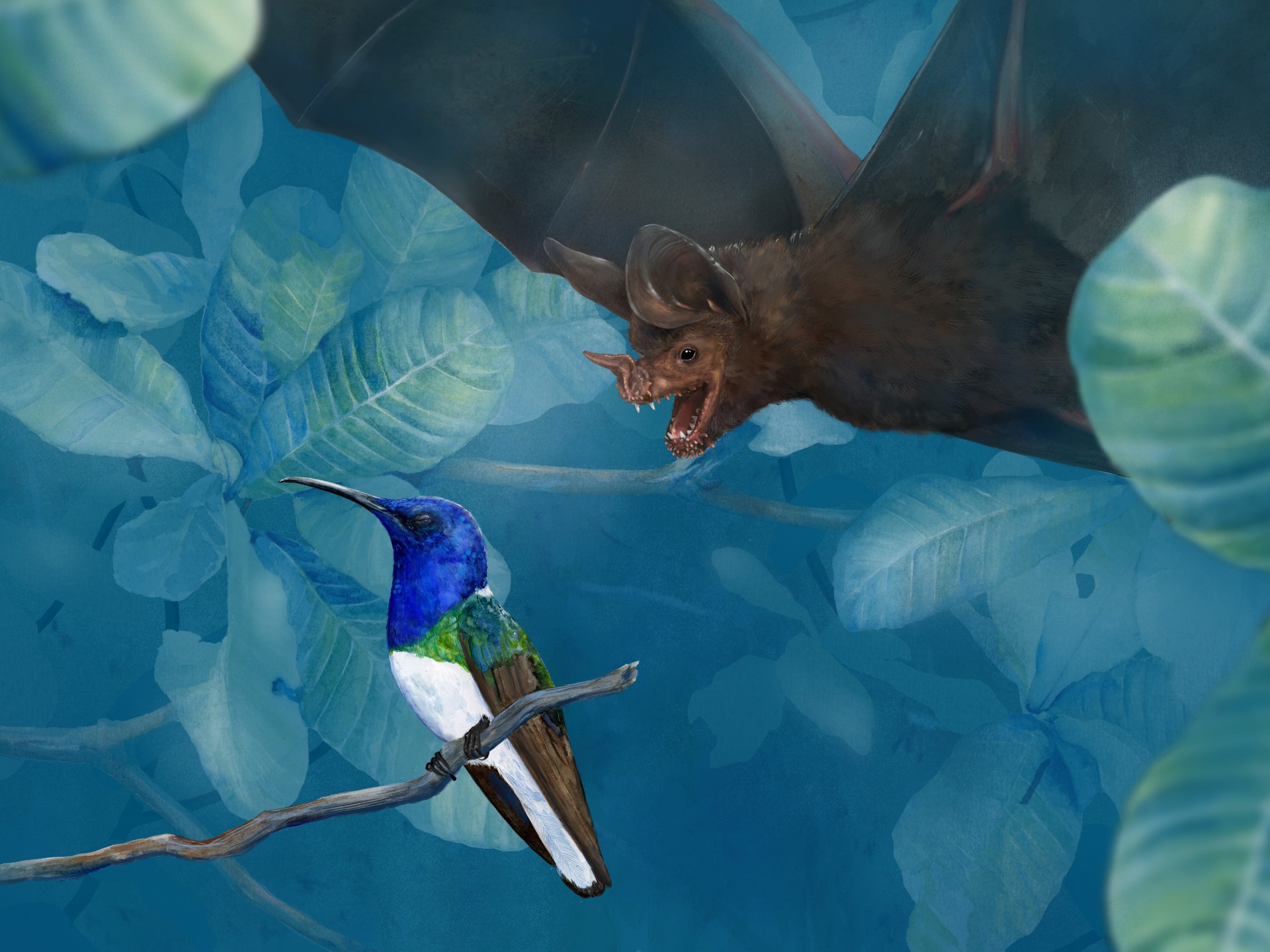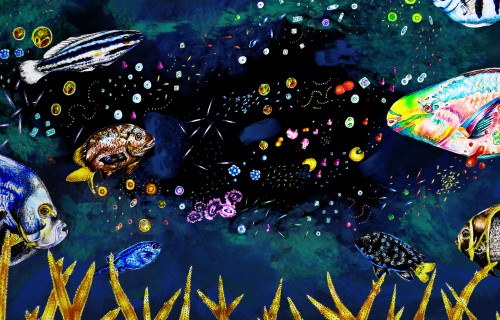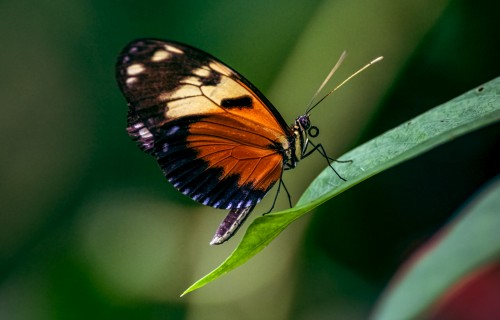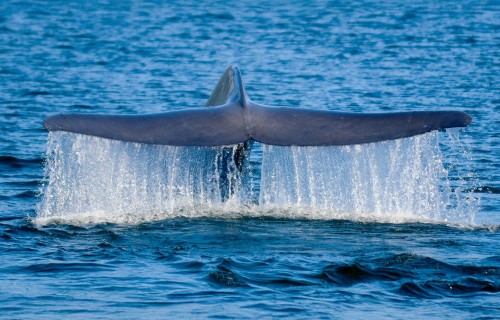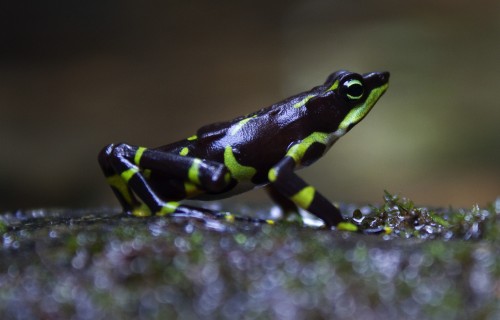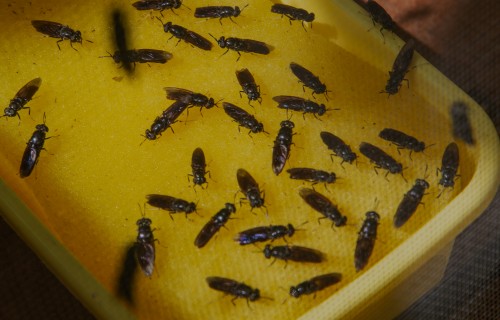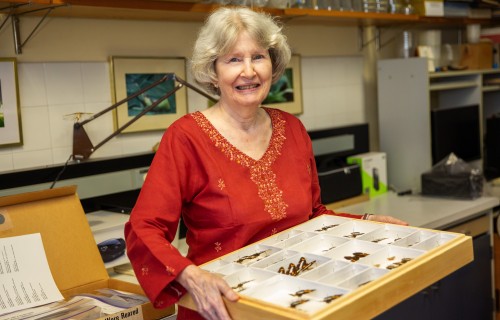Smithsonian science helps understand blue whale migratory and foraging patterns to inform conservation strategies
Worth a
thousand
words
Amy Koehler transforms
bat science into bat art
Gamboa
Reshaping her interest in science into a career in art, Amy Koehler does what she loves best in the Bat Lab
“Becoming a science illustrator is about understanding the power of an image and how to use it as an invitation to learn more about nature,” says Amy Koehler, the first artist in residence in STRI’s Bat Lab in Gamboa.
Growing up in San Francisco, Amy loved to spend time exploring the city’s extensive park system. In college, she majored in zoology. But she still felt like something was missing. To explore her more creative side, she signed up for the science illustration program at California State University, Monterey Bay.
Amy sharing her story with students visiting the Smithsonian's lab in Gamboa, Panama.
To top off an amazing curriculum that juxtaposed art lessons with tidepooling and kayaking near Big Sur, the students were tasked with finding an internship. Amy came across a video of STRI Bat Lab director, Rachel Page, talking about bat perception. She found the Bat Lab website and was immediately impressed by the commitment of the lab to sharing their work with the public at monthly Bat Nights.
Soon, she flew to Panama and joined the lab as its first-ever artist-in-residence. One of the first bats she saw up close is still her favorite: “Myotis nigricans. It has such a tiny face. It’s the cutest bat ever.”
The best place for inspiration is outside!
Almost half of the mammals in Panama are bats. Unlike bats in the temperate zone that primarily eat insects, bats in the tropics eat a wide variety of foods, from fruit to frogs to fish. In the Bat Lab, students work alongside senior researchers to understand how bats use their 6 senses (sight, hearing, smell, touch, taste AND echolocation) to find their food and how the bats learn important food-finding information from other bats.
“This project has made me think about different forms of information, how humans use the senses and the possibilities of communicating differently with art,” Amy explains. “Bats are so important to the environment, they disperse seeds, pollinate flowers and control pests…and a lot of people don’t know that.”
When the Bat Lab hosted a group of seventy middle school science students in Gamboa, Amy created a special passport for the students to record information and impressions as they moved from on station to the next. She created a special “science illustration station” with a mounted specimen for the kids to draw.
A pen and ink study of bat faces helped Amy to focus on the important details that make species different from one another.
“We talked about art as a tool for observation,” Amy said. “Many of the kids became very focused and quiet. Their drawings reflected characteristics of the specimen that they noticed while drawing and that led them to ask certain questions. There are so many ways of learning! I think art can be utilized more in scientific spaces.”
She also illustrated a STRINews web story about a publication by post-doc Inga Geipel, on bat predation of katydids.
“Think about every time you pick up a book,” Amy said. “One of the first things I notice is the image on the cover, then I read the synopsis.”
When Amy came to Gamboa, she never suspected that there would be a pandemic. Panama’s COVID-19 quarantine was much stricter than lockdowns almost anywhere else in the world. Women were only allowed to go to the grocery store and pharmacy on Mondays, Wednesdays and Friday for two hours, based on the last number of their I.D. or passport. Men could go out on alternate days.
Because Gamboa is a 30-minute drive from the nearest supermarket, food shopping easily filled the two-hour slot. And Amy did not have a car. But Gregg Cohen, Bat Lab manager, and his partner, entomologist Yacksecari Lopez, came up with a solution for all of the Smithsonian students who ended up staying in Gamboa during quarantine. Their work coordinating fresh food delivery to Gamboa helped not only the local STRI students, but also the larger Gamboa community and the nearby Emberá-Wounaan village.
Amy created this illustration for a post-doctoral fellow in the lab who was publishing a story about bat-katydid interactions.
“Gregg is so awesome,” Amy said. “He and Yacksecari really took the initiative to organize a fresh food delivery to the area. They care a lot about the community!”
“I actually ended up learning more about digital techniques during quarantine because I was short on art supplies but had my tablet with me. I still make more analog sketches though.”
Amy has recently returned to the U.S., while STRI waits for clearance to reopen Panama facilities.
Poop is full of secrets! Amy Koehler illustrated one of the most exciting findings this year, frog eating bats sometimes eat hummingbirds, a discovery based on the analysis of DNA in bat poop.
“Our world is at such a critical place. We’re in a pandemic, we’re fighting for Black lives, Indigenous lives, the environment…everything is intertwined. I guess at the end of the day what I’m interested in is story-telling. Now more than ever is a time when art can be used to connect, move, teach, learn, uplift. I hope I can continue to express my love for this world and share more stories.”
Rachel Page, head of the BatLab, was thrilled by the chance to try something different: “The intersection of art and science is such exciting, fruitful ground. We were so happy to host Amy as our first artist-in-residence in the Bat Lab! We hope very much to continue merging art and science through more Bat Lab artist-in-residencies going forward.”

